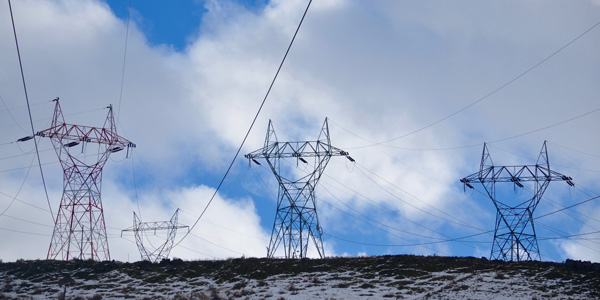A Western resource adequacy program proposed by the Northwest Power Pool could require state regulators and utilities to relinquish some control over their integrated resource planning (IRP) processes, according to a report discussed in a webinar Friday hosted by the Western Interstate Energy Board.
The biggest impacts would be on RA targets and resource capacity credits, while load forecasts and transmission expansion would also be affected, researchers at the Lawrence Berkeley National Laboratory, the University of Texas and WIEB concluded.
Resource capacity credits allocate values to categories of generation. If a regional RA entity and its members were to assign different values to wind and solar power, for example, the conflicting assessments could undermine Western RA efforts, researchers said. Local planners would have to defer to the regional entity in the case of disagreements.
“There should be a regional resource capacity accreditation process that would create capacity credits for different variable resources or, in general, all the resources,” Juan Pablo Carvallo, the report’s lead author and senior scientific engineering associate at Lawrence Berkeley, said.
States would also have to defer to a regional entity to establish RA planning targets, he said.
If states wanted to be “super adequate” and have stricter RA criteria than a regional body “that would be perfectly fine … [but] it would be particularly problematic if it was the other way around. If some state, for some reason, had a lower reliability target than the regional level, that would create numerous problems,” Carvallo said.
The report, titled “Implications of a regional resource adequacy program on utility integrated resource planning: Study for the Western United States,” elaborated on the conclusion.
“States have historically assigned different capacity credit factors for similar resources — especially for wind, solar and demand response — which may create friction among members if some states recognize higher or lower capacity than others for similar resources,” it said.
“This report finds that for an efficient and effective operation of a regional RA program, states in the footprint will need to defer to the program’s definitions of resource adequacy targets … and resource capacity accreditation. States would effectively surrender control over those two assumptions and let the regional program define them,” it stated. Members of a regional RA program would also have to find ways to coordinate load forecasts and transmission planning instead of going it alone.
“These elements could continue to be developed by the [load-serving entities] under state IRP mandates, but coordination of input data, modeling assumptions and outcomes will be needed with the regional RA program,” the report said.
A regional entity could establish transmission plans from the top down or compile a larger plan from local planning efforts, Carvallo said.
NWPP launched its RA effort in 2019 after studies showed the Pacific Northwest could start to see resource shortfalls as soon as 2020 or 2021. As designed, the program would be voluntary but could impose mandatory RA requirements on entities that join to avoid LSEs “leaning” on the program to meet their own RA requirements.
NWPP’s sprawling footprint covers eight Western states and two Canadian provinces, meaning the RA program could potentially govern much of the Western Interconnection except for Arizona, California and New Mexico. (See NWPP RA Effort Quickly Ramping Up.)
The Northwest, California and other parts of the West face tightening supply caused by the retirement of coal plants and a greater dependence on wind and solar resources. Those conditions contributed to California’s energy emergencies last summer including rolling blackouts in August, and CAISO to Focus on Resource Adequacy in 2021.)
“Monitoring and maintaining RA is becoming increasingly complex and challenging due to plant retirements, higher penetration of variable renewable energy resources and COVID‐related load fluctuations that translate to higher uncertainty on the amount of generation that will be available during periods of peak demand,” the report, funded by the U.S. Department of Energy, said.
“This paper is primarily aimed at state regulators, public utility commission staff and resource planners from states in the NWPP footprint that are pondering how their IRP guidelines and regulations may need to adjust to operate jointly with a regional RA program,” it said.
SPP as Role Model
The study examined the experience of the Southwest Power Pool, which partly served as a role model for NWPP’s effort. SPP to Develop NWPP Resource Adequacy Program.)
“SPP is an interesting case study for this paper, because many LSEs in its footprint are required to conduct IRP while also complying with SPP RA requirements,” the report said. SPP and its members generally have been able to communicate and reach agreement on the types of issues that will likely arise in NWPP’s program.
“Ongoing work among states lead to consensus even when there were initial disagreements on a range of topics,”
the report said. “This relationship has made [local] IRP and SPP guidelines naturally follow each other as evidenced from IRP reports and statutes.”
LSEs, for instance, tend to defer to SPP on transmission planning because they “do not want to be redundant, and they inherit in their IRPs many of the assumptions coming out of the transmission planning process from the Southwest Power Pool,” Carvallo said.
The report said the “SPP experience shows that load forecasting can be left to the member entities in the regional program provided that they develop and share forecasts with standardized statistical characteristics.”
“Ultimately, interviewees from public utility commission staff from SPP states indicated that LSEs have an incentive to develop IRP assumptions that are consistent with SPP’s in order to fulfill their membership duties,” it said.
In the NWPP RA program, the report said, “LSEs should be able to develop NWPP‐aligned forecasts as part of their IRP processes and benefit from the public stakeholder engagement as long as IRP regulations in the NWPP states are based on a broad and flexible set of principles.”




